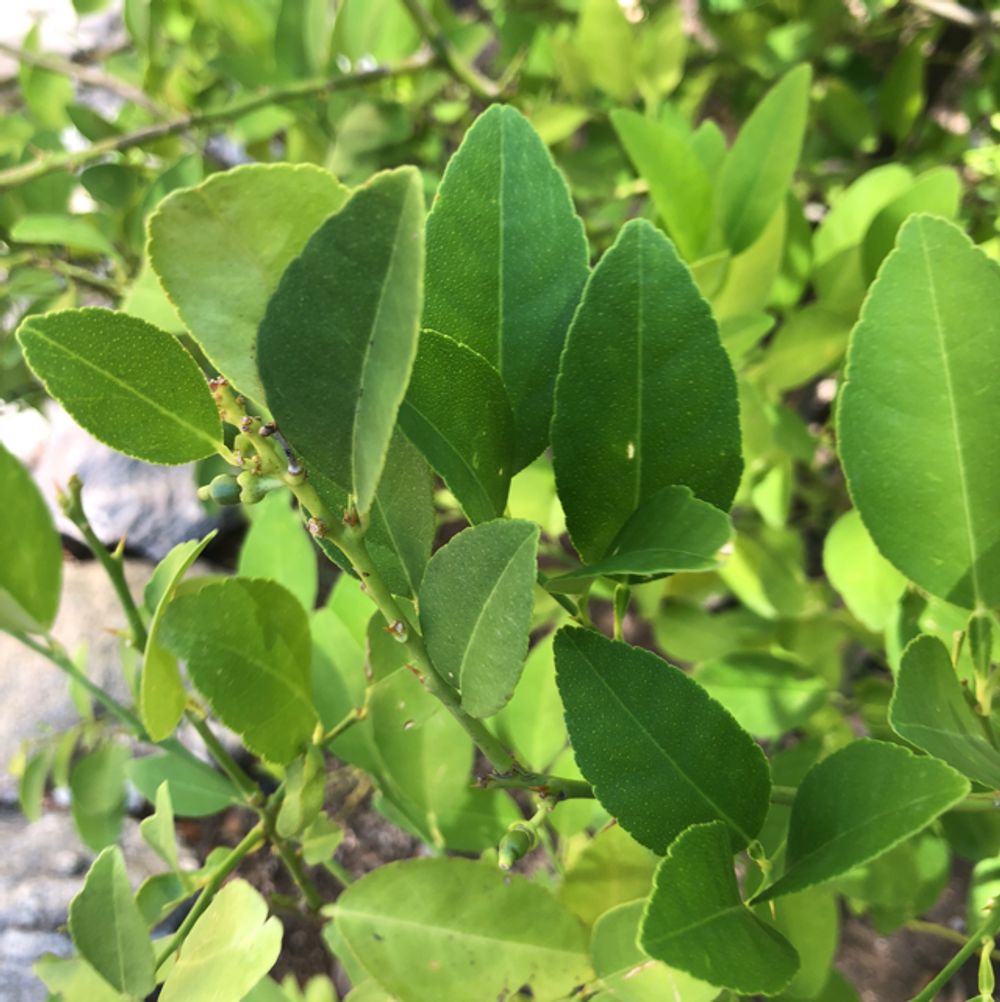Key lime
(Citrus aurantifolia)

Description
“Pet poisonous” - Toxic to Dogs The Key lime (Citrus × aurantiifolia) is a citrus hybrid (C. micrantha x C. medica) with a spherical fruit, 2.5–5 cm (0.98–1.97 in) in diameter, that is yellow when ripe but usually picked green commercially. It is smaller and seedier, with a higher acidity, a stronger aroma, and a thinner rind, than that of the Persian lime (Citrus × latifolia). It is valued for its unique flavor compared to other limes. The name is derived from its association with the Florida Keys, where it is best known as the flavoring ingredient in Key lime pie. It is also known as West Indian lime, bartender’s lime, Omani lime, or Mexican lime, the last classified as a distinct race with a thicker skin and darker green color. Philippine varieties have various names, including dayap and bilolo. C. aurantiifolia is a shrubby tree, to 5 m (16 ft), with many thorns. Dwarf varieties exist that can be grown indoors during winter months and in colder climates. Its trunk, which rarely grows straight, has many branches, and they often originate quite far down on the trunk. The leaves are ovate, 2.5–9 cm (1–3 1⁄2 in) long, resembling orange leaves (the scientific name aurantiifolia refers to this resemblance to the leaves of the orange, Citrus aurantium). The flowers are 2.5 cm (1 in) in diameter, are yellowish white with a light purple tinge on the margins. Flowers and fruit appear throughout the year, but are most abundant from May to September in the Northern Hemisphere. When in contact with the skin, the Key lime can sometimes cause phytophotodermatitis, in which a chemical reaction makes the skin extra sensitive to ultraviolet light.
Taxonomic tree:







